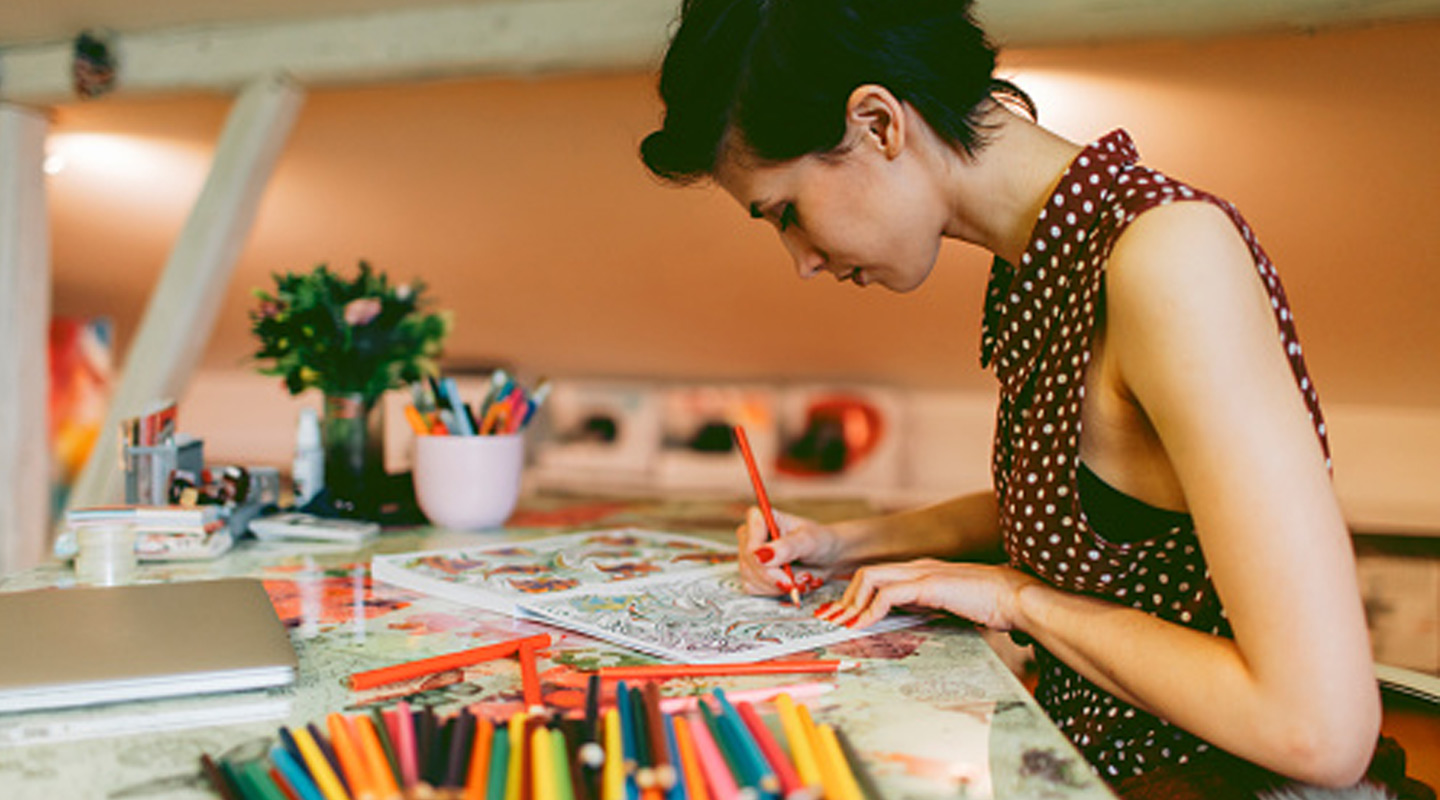In this Decompression Session, we’ve compiled some off-the-beaten-path ideas for mind games—the good kind! Some of these games are designed to reduce stress, others to build mental acuity in a fun way.
At minimum, they are all enjoyable activities that you can have in your wellness arsenal for when you need them. Think of them less as brain teasers and more as brain pleasers. There are no chores or mental gymnastics here—no heavy lifting for the cranial muscle. You do enough of that already! But these are all productive and healthy ways to release your stress or unleash your creativity—or both!
And, because we’re WCU, we’ll include a little science for each. Here are some ways to give your brain a little playtime:
Get an Adult Coloring Book
Adult coloring books became a “thing” several years back, and the trend has staying power. And why not? Coloring isn’t just fun… it has mental health benefits, like mindfulness and stress relief. When you’re coloring, your mind is focused on the visual task and puts other nagging thoughts and worries to the side. It’s a satisfying creative activity that anyone can do, so if you’re one of those people who says, “I can’t draw,” good news—no artistic skill is required.
Want to take it a step further? Pick a page with objects that are familiar, and use the wrong colors for them. Color an apple purple, a tree blue, or a fire engine gray. Inverting the way your mind has something memorized (e.g., colors, habits, objects) activates and exercises large underused areas of the cortex. Plus, you’ll have your own Picasso-esque opus to show for it.
Play a Solo Board Game or Puzzle
We typically think of games as a group activity, but there are many you can play by yourself. You can choose a game that requires some concentration or one that feels more mindless. The good news is both types of games are mindful.
Puzzle games that exercise your reasoning and logic are made fun by the emotional reward of winning. Many types of puzzle games are already on your radar. Sudoku, crosswords, and mazes rank among the most common, but there’s no shortage of number- and word-game types, so you can mix it up if you want to go off-the-beaten-puzzle.
For something more visual, jigsaw puzzles are an obvious match, but you can also find pattern-finding and shape-solving games that will engage your eyes, fingers, and brain. Most of these come in different levels of difficulty, so if you’re looking for a snack-sized task you can choose an easy one, or you can start a more difficult puzzle and complete it in installments.
Want something a little more gamified? Buy yourself a board game for one. Single-player board games come in lots of genres—solve a mystery, build a world, choose your own adventure. Board games are designed to be fun, and they’ll keep you engaged with a story-based goal.
You can find digital versions of many games and puzzles online, but we recommend you invest in the IRL versions. Give the blue screen a rest and interact with something tactile. Multisensory stimulation engages your brain’s white matter, exercising this critical part of the brain communication system.
Build a Model of Something You Love
We love this option for someone who wants the satisfaction of a longer project that can be achieved in small increments. The other great thing about building a model is that you don’t have to be a train enthusiast to get into it. There is an almost endless variety of model themes and scales to choose from.
Always wanted to visit France? Get a model kit of Notre Dame and bring the iconic Parisian landmark to you. Love to nerd out on Star Wars? There’s a Millennium Falcon kit for that. If you don’t want the additional mess of modeling glue, just buy a large Lego kit and start there.
The best thing about building models is the brain loves it. Building models activates various parts of the mind. We’re wired to derive pleasure from building something tangible, so crafting a Rube Goldberg device or a miniature Craftsman cabin is great for your mental health.
Stare Into Negative Space
Ever heard the expression “turn a negative into a positive”? All you need is your eyes. The term “negative space” refers to the space around an object. You’ve probably seen drawings that create a dual image by using the negative space, like the Rubin vase that shows both a vase and the profile of two faces, depending on what you choose to look for.
Looking for negative space involves a higher-level cognitive recognition. Next time you stare off into space, choose an object in the middle distance, and then refocus our eyes on the space around it. This might seem odd at first, because our minds are trained to focus on solid objects, for very practical reasons, like not walking into coffee tables. But what about the space that object occupies? What about the space you occupy? Pretty soon you’re seeing your world in a different way.
In fact, drawing negative space is a training technique often used in art schools. So if you want to take it a step further, grab a pencil and sheet of paper and draw the space around something, and then watch the object emerge. It’s more challenging than you think, but over time, you might find you get an even more accurate drawing by rendering it according to the negative space.
Let’s Play Again…
Most of the mind games above are worth repeating. Some of them will be completed over a longer period of time, and others may be quick exercises that you enjoy enough to return to again and again. Feel free to find (or invent) your own brain activities to keep things interesting!
Continue reading our Decompression Session posts for more health tips for students.
WCU provides career guidance and assistance but cannot guarantee employment. The views and opinions expressed are those of the individuals and do not necessarily reflect the beliefs or position of the school or of any instructor or student.



